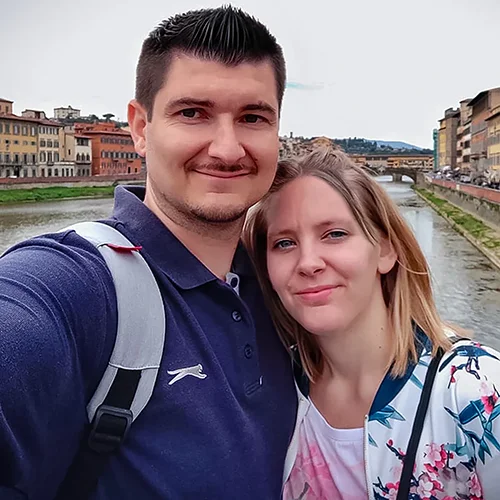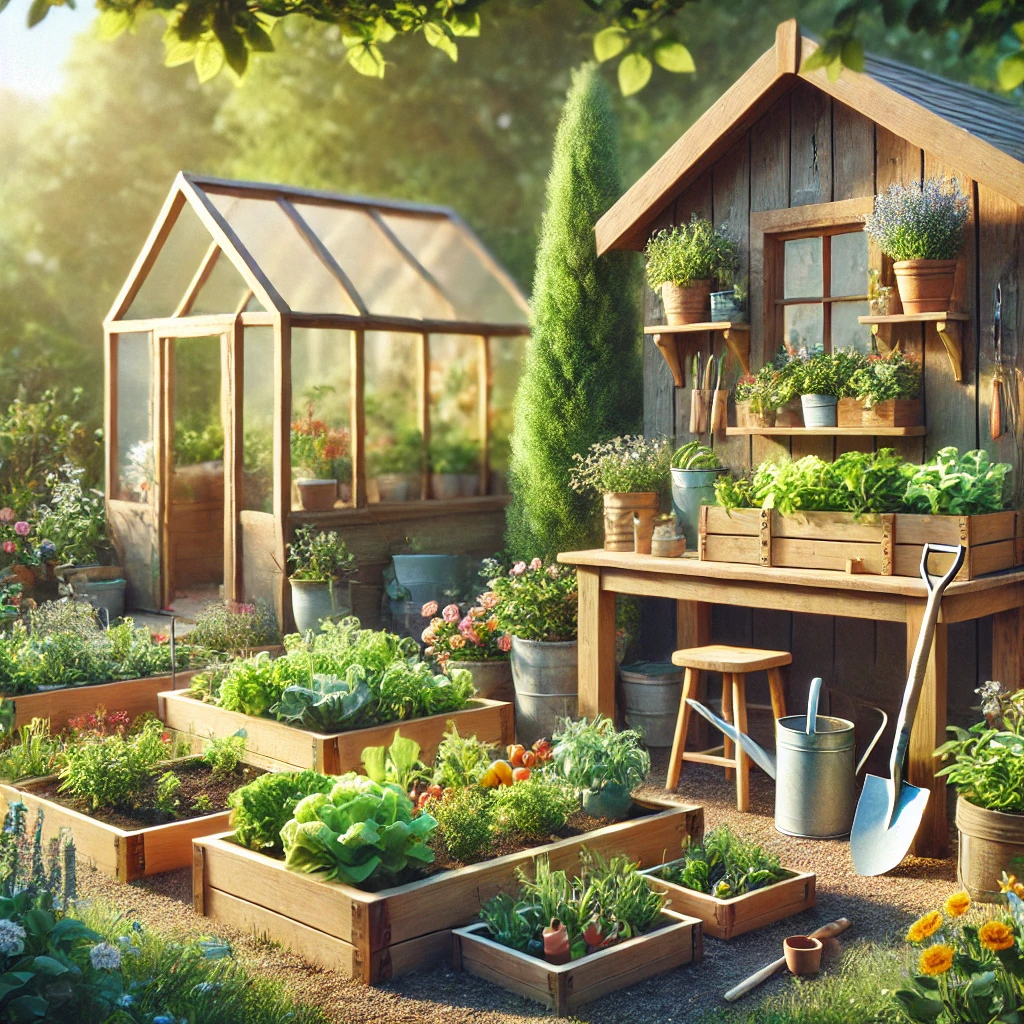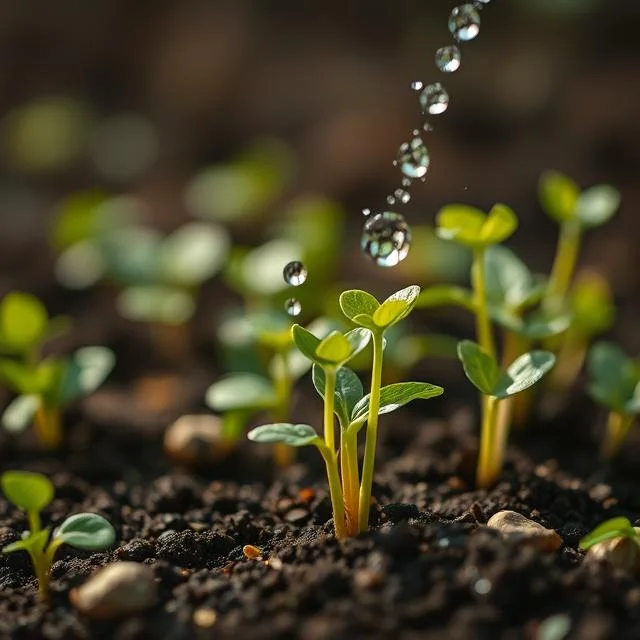Spring awakening in the garden
Spring awakening in the garden
Spring awakening in the garden
Spring awakening in the garden
2. April 2025
Feedback: 0
It’s March, the sun is tickling your nose, and your fingers are itching – no, not because of pollen, but because it’s finally time to get back to gardening in spring! As expats, gardening in Spain was a bit of an adjustment at first. Sure, we knew things would be different – but realizing that our tomato growing season kicks off in March while in Germany, people are just putting on their gloves? Surprise!
In this post, I’ll take you on a journey through our garden – across the seasons in Spain compared to Germany. You’ll get an overvIn this post, I’ll take you on a journey through our garden – across the seasons in Spain compared to Germany. You’ll get an overview of what to plant in March and April, tips for spring gardening, and of course, a bit of humor. Because anyone who has ever tried to grow radishes in Spanish soil knows: Life is too short for bad compost.
iew of what to plant in March and April, tips for spring gardening, and of course, a bit of humor. Because anyone who has ever tried to grow radishes in Spanish soil knows: Life is too short for bad compost.
Choosing the Right Location – Sun or Shade?
Germany
In Germany, choosing the right location for your plants is crucial, especially in spring when the weather can be unpredictable. The ideal spot for most vegetables is a partially shaded area in the garden. Direct sunlight is great, but too much moisture can be an issue, especially if spring turns out to be rainy. A little sunshine helps, but too much rain is definitely not the best friend of vegetables like tomatoes or peppers.
Spain
In Spain, it’s a completely different story! Here, plants absolutely need shade, especially in the hotter regions. We’ve placed our compost bin under a tree to protect the plants from direct sunlight. If you’re gardening in a hot climate like this, too much sun can be fatal for young plants—they dry out faster than you’d like. So: Shade is a must if you don’t want to end up with a desert garden!
Spring in Spain: It’s Time to Sow!
The sowing season starts earlier here in Spain than in Germany. While our friends back home are still shivering in March and using their garden calendar more like a wish list, I’m here in the sun – with a watering can in one hand and a packet of seeds in the other.
Which plants are planted in March?
Here on the Spanish coast (Costa Blanca, Costa del Sol, and others), you can really get going in March. The soil temperatures are often above 12°C – meaning perfect conditions for heat-loving plants!
◉ Tomatoes (my personal stars in the garden)
◉ Peppers
◉ Chilies
◉ Zucchini
◉ Eggplants
◉ Basil
And for those in a hurry: Radishes and lettuce grow here in no time. Within three weeks, you can already enjoy your first bowl from your own garden. Yes, even the dog gets jealous!
April in Spain: What’s Added?
From April onwards, the garden bed gets really crowded! Now we plant cucumbers, melons (yes, melons!!), corn, and beans. The nights are mild enough to also plant more sensitive crops outdoors.
🔍 Insider Tip 🔍
Sweet potatoes grow amazingly well here! In Germany, it’s more of a challenge unless you have a heated greenhouse in your garden. im Garten stehen.
Spring in Germany: Patience is a Garden Virtue
In Germany, sowing usually starts indoors in March, either on the windowsill or in a cold frame. The soil temperatures outside are often still too chilly – anyone who has ever tried to plant carrots in the garden in March knows the struggle of waiting for weeks for them to germinate.
What can you sow in Germany in March?
◉ Radishes (the classics for the impatient)
◉ Spinach
◉ Peas
◉ Onions (set onions work great)
◉ Early potatoes (under fleece or in raised beds)
You can start indoors:
◉ Tomatoes
◉ Peppers
◉ Chilies
◉ Kohlrabi
April brings more options
From April onwards, you can finally get started in Germany – but with caution. The „Ice Saints“ are not to be underestimated! A sudden cold snap can quickly ruin your little plants.
◉ Lettuce
◉ Carrots
◉ Swiss chard
◉ Beets
◉ Sugar snap peas
And for the brave ones: You can plant zucchini in the garden from mid/late April – but always keep an eye on the weather forecast!
Irrigation – Who has the green thumb here?
Germany
The topic of irrigation in Germany during spring is all about finding the right balance. Rain is great for the plants, but not every vegetable loves constant rainfall. That’s why we use drip irrigation or a rainwater collector to provide the plants with consistent moisture without drowning them.
Spain
Irrigation in Spain is a whole different chapter. Here in Spain, we really have to think carefully about drip irrigation because the summer can get incredibly hot. While spring is still quite mild, we already know that by June at the latest, we’ll need to constantly check the irrigation systems to avoid risking dried-out plants. Efficient water usage is essential here.
The Big Comparison: Gardening in Spain vs. Germany
Climate & Conditions
Germany
Weather extremes deluxe. Sun, rain, frost – all possible in one day. The advantage: The soils are often richer in humus and require less water.
Spain
Plenty of sun, little rain – ideal for Mediterranean vegetables. But: watering is key! We’ve installed a drip irrigation system, otherwise, you’d be out there in the summer with a sunburn and a garden hose.
Soils & Care
Germany
Heavier soils, more nutrients. But: snail alert! In Spain, we hardly have any snails, but in Germany? You could give them names, considering how often they visit your lettuce heads.
Spain
Often sandy or rocky soils. Nothing works without compost or good soil. My tip: Check out local horse manure deals! The farmers here are usually very helpful – a friendly smile works wonders.
Here’s the link to the blog post on composting
Challenge
Germany
Late frosts and too much moisture. If you’re unlucky, the roots can easily rot.
Spain
Heat and water scarcity. Also, the whitefly – this little pest loves tomatoes and peppers just as much as we do.
Our tips for spring gardening – no matter where you are:
1. Make a garden plan
Whether you’re in Spain or Germany: A good garden plan saves you from chaos! Which plants go where? Companion planting or row planting?
2. Test the soil
Give your soil a little check-up. Measure the pH level and check the soil structure. In Spain, we mix compost into almost everything – in Germany, sand is often used to loosen up heavy soils.
3. Choose the right varieties
In Spain, Mediterranean vegetable varieties work better. In Germany, robust, cold-resistant varieties are worth it. Always check if you can get heirloom seeds – that way, you can harvest your own seeds for next year!
4. Learn to water early
In Spain without irrigation? Good luck! In Germany, spring can be dry too – so remember to water there as well. Usually, watering once in the morning and once in the evening is enough. And: It’s better to water less frequently but more deeply.
My conclusion: Gardening is an adventure everywhere!
Whether you’re growing your vegetables in the sun of Spain or in the ever-changing weather of Germany, gardening in spring is pure joy – and sometimes pure work! But it’s worth it. When I pick my first tomatoes in May (while my friends in Germany are still planting their seedlings), I know: That was the right step.
Have fun DIY-ing with heart and humor!
Made with love is halfway to success! Drop a comment and let me know how your project went – even if it didn’t go as planned! 🤭 For more DIY ideas about expat life, living with dogs, and sustainable living, stay tuned!
Your Steffi and Marius

Wir sind zwei deutsche Auswanderer und auf emigres-life nehmen wir Dich mit auf unsere Reise in ein neues Leben.
In unserem Projekt schwingt das Pendel meist in Richtung stressig oder chaotisch und weniger in Richtung tiefenentspannt.
Wenn du also wissen willst, in welches Fettnäpfchen wir als nächstes treten oder welche Hürden vor uns liegen und wie wir sie überwinden, dann bleib dran.
Nächster Blogpost
The importance of routine and structure for dogs



 Pin it!
Pin it!

